

Although not a publication of the Atlas Computer Laboratory, this issue of the Journal of the Rutherford High Energy Laboratory was used as an introduction to the Laboratory and many additional copies were published for that purpose.
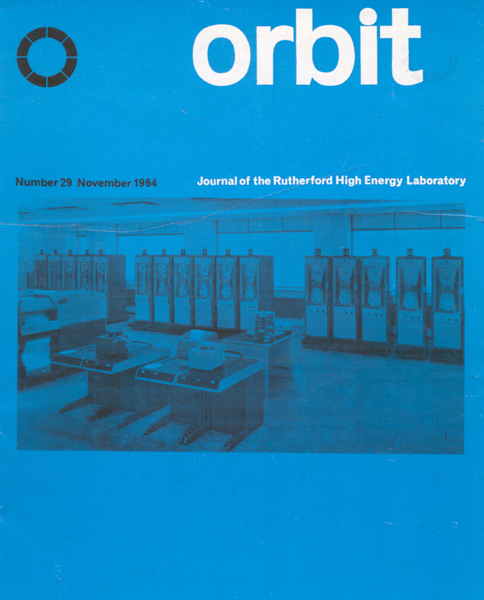
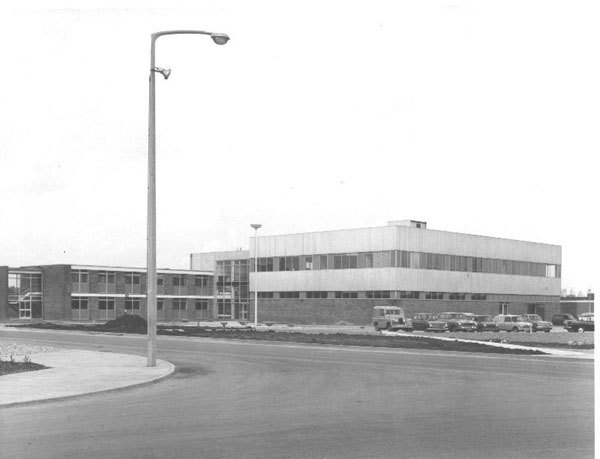
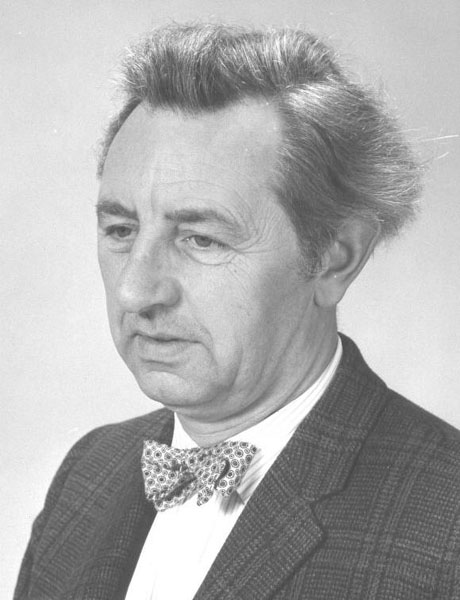
Dr. Jack Howlett was born in 1912. He read mathematics at Manchester University and after some time in the research department of the L.M.S., joined the Ministry of Supply in 1940. In 1948, he became head of the Computing Group at A.E.R.E. and in 1961 was appointed Director of the Atlas Laboratory. Dr. Howlett lives at Tubney, Berkshire; he is married and has five children.
The Atlas Laboratory is not yet strictly in business but it is very much a going concern. The computer is all there and working and, whilst it is still in the hands of the commissioning engineers, it is being run by the Operations Group for 8 hours a day and is doing real work. It is rash to make predictions in public, but we hope to take the machine over before the end of the year. To be fair, I must say that the contract with the manufacturer says that this must happen not later than 31 March 1965. We had thought we might have the machine by 1 October, but this proved too optimistic.
The Laboratory is part of the N.I.R.N.S. and has serious responsibilities towards the nuclear physics programme but is not just a part of this programme. It is a wholly mathematical enterprise, based on one large computer, whose terms of reference require it to provide a service to these groups of users:
As in the N.I.R.N.S other Laboratories, no charge is made for University work; A.E.R.E. and other Government users will be charged the actual cost of the work done. Again no security measures are applied so that no classified work will come in. The terms of reference say that, after these demands have been met, any time left over can be sold to private customers at commercial rates. But the demand we can see already, indicates that there is more likely to be a shortage of time than a surplus, so the chance of our actually selling any to industry is very small. Money earned by selling time does not help to fill the Atlas Laboratory coffers, but goes straight to the Treasury: thus is temptation removed.
In 1961, the Government was considering buying a large Atlas computer to be used in this way. It invited the Governing Board of the Institute to consider broadening its terms of reference to accept the responsibility of managing the machine; the Board agreed and set up a special committee, the Atlas Computer Committee, to look after the project. This is a body of senior people, chaired originally by Sir William Penney and now by Professor Flowers, reporting to the Board; it takes the major policy decisions and settles the Laboratory complement and budget, both of which are kept separate from those for the physics programme. There is also a Users' Committee, chaired by Professor Fox, to keep an eye on the Director and to voice the needs of the users.
The Laboratory is sited judiciously between the Rutherford Laboratory and A.E.R.E. and is a simple, functional and, we all feel, very stylish structure. It is in two parts, an air-conditioned block housing the computer and a straightforward office block, linked by the entrance hall and stairway. It is one of the very few buildings in this country designed as a computing laboratory. We thought very hard about the operational needs, the disposition of the computer and all the ancillary equipment, the volume and pattern of traffic flow, and feel smugly pleased with the result. The photographs show the main features and will, I hope, convey something of the feeling of brightness and space in the operating area.
I am glad to have this opportunity of saying how much we appreciated the co-operation of S.W.O.. The architect and engineers and everyone else went to endless trouble to understand our needs and to produce an efficient design which would meet them; it was a most pleasing and interesting experience.
The ideas behind the machine are due to Professor Kilburn and his colleagues in the Computer Laboratory of the University of Manchester. Ferranti Limited, who in 1963 sold their computer business to I.C.T. Limited, developed these into the engineered version and installed the first Atlas in the Manchester Laboratory in December 1962. A second is working in the University of London Institute of Computer Science and ours is the third and biggest. The general aims of the design were: the circuitry should be as fast as could be guaranteed with the components in quantity production when serious construction started in 1961; there should be no reason, apart from shortage of space or money, why a system could not be built up to almost any size; the principle of timesharing should be exploited to get the greatest possible rate of flow of work.
Our own installation is on a large scale and gives University workers access to something much bigger and more powerful than they can get on to anywhere else, at least with any ease. I am willing to risk the opinion that the total resources of the Laboratory are comparable with those of any open computing laboratory in the world- I choose my words carefully, because of course there are weapons and other closed laboratories with much greater resources, and of course we shall be overtaken, but that is inevitable - you can always do better by waiting another year or so.
The main store is divided into cores and drums, but the user can treat it as one continuous store of nearly 150,000 words; a built-in program organises any necessary transfers. There is also a "fixed store" of 8,192 words made of ferrite and copper slugs set in a wire mesh with an access time of about 0.3 μs; this holds all the basic programs, such as those for reading and punching cards or paper tape, and computing simple functions. We are in the middle of discussions with I.C.T. about a visual-display system to provide graphical output and produce microfilm and cine films, and we are looking into the case for adding a disc store of about 4 million words capacity and, about three years ahead, a magnetic card file which would hold about 100 million words. The capital cost of the installation as we have it was £2.8 millions; the additions would cost about £400,000 more.
Compiler programs have already been written which will cause the machine to accept programs in the most commonly used languages: Fortran, Algol, Mercury Autocode and its extended form (E.M.A.) and Atlas Autocode (designed and written by Manchester University). We shall be adding some list-processing routines, that is, programs which manipulate strings of characters which have no numerical properties, such as punctuation in a literary text.
Considered as a piece of machinery to be operated by people, Atlas is very different from any previous computer because most of its activities are maintained, controlled and reported on by an elaborate built-in program called the Supervisor. This is discussed later so I will say no more than that it is a most advanced piece of computer technology which makes Atlas a fascinating machine - I am inclined to add to grapple with. The system has given I.C.T. and ourselves plenty of headaches and without doubt there are more in store: it is Supervisor faults and deficiencies as much as hardware troubles which are holding up the take-over. But it is very pleasing to see it in action, as for example when a small job goes into the machine whilst a large-scale calculation is in progress, wriggles through the meshes of the large job and surfaces, completed, without any apparent disturbance to the other. But we have to do some cold assessing of the efficiency of this process.
This is quite simple and expresses the three essential needs: work has to be processed through the installation, basic programs have to be provided to make this possible and the whole place has to keep alive intellectually or nothing will be done well. There is an Operations Group, a Programming Group, a number of individual research posts and an Administrative Group.
Mr. Hailstone writes about his Operations Group. With literally hundreds of users distributed all over the country it is a large-scale enterprise, which is looking to me more and more like a sophisticated mail-order business. When we are running to capacity, he will have an empire of 66 people.
Dr. Churchhouse also writes separately about the Programming Group, which is planned to rise to 17, all mathematicians.
The research posts are provided so that we can have in the Laboratory people who will work as individuals, free from the day-to-day pressures, whose interests may lead to uses of the machine in new fields or in unusual ways. We had always hoped that the holders of these posts would form or retain links with the academic world, and are very pleased that we have been able to arrange for some of these posts to be held jointly with Fellowships at Oxford Colleges. At the moment we have joint appointments with Trinity, Pembroke and St. Catherine's, and one person retains a connection with the University of Edinburgh. The present complement allows for 7 posts.
Important though it is, there is not much I need say about the Administration. Mr. C . L. Roberts is the L.A.O. and the whole service is a branch of the Rutherford Laboratory administrative organisation. The special problems which will exercise this group come from the heavy flow of work and the large number of short-term visitors.
The prime job of the Laboratory is to run the computer and the supporting services as efficiently as possible so that a large number of people can get their work done quickly with the least possible trouble to themselves. I find it hard to write coherently about this work because it is so varied; if it were not, the aim of providing computational help over a wide field would not have been achieved. A.E.R.E. alone will send quite a variety, the biggest calculations probably being concerned with reactor theory. The Rutherford Laboratory work will be almost wholly track analysis and interpretation of bubble-chamber and spark-chamber experiments; the very large and complex programs have already been written in Fortran and run on Orion and on IBM 7090 machines, but it will take a lot of hard work to get them running smoothly on Atlas. I hope we shall make life a little easier for the physicists, who have been having a hard time over the past year or so, getting their work done wherever they could.
The Meteorological Office has already gone a good way with developing a big program which integrates the equations of motion of the atmosphere as part of its research into methods of numerical weather forecasting. The Medical Research Council's Molecular Biology Unit at Cambridge will send problems coming from its work on the structure of proteins, viruses and DNA, and M.R.C. generally is stimulating interest in the use of computers in the medical world. They arranged a very successful conference in Oxford last July when mathematicians, biologists, physiologists, clinicians and others talked to one another for three days. An enormous range of work is coming in from the Universities from theory of lubricated bearings to analysis of social statistics, with problems in nuclear and molecular theory somewhere in the middle. The striking fact about this work is the speed with which it has appeared, making it clear that the demand is already there waiting to be satisfied.
If I might end with a personal comment, I would like to say that I find the whole project unfailingly fascinating and exceedingly rewarding.
The first collaboration in the Joint Fellowship scheme was with Trinity College, Oxford. Both sides were anxious to make it clear that this would be no ordinary appointment and that they were prepared to consider a man working in any field and at any stage in his career; what mattered was that he should be a first-class man who was attracted by the idea of working in the environment of a big computer. We advertised both here and in America, in pretty broad terms as can be seen from the actual advertisement printed below.
The comments on the announcement ranged from, "It's a pity you can't make up your minds about what you want" to, "Tremendous - the advertisement of the decade". 124 applications were received from all over the world, which most certainly showed the breadth of interests that were hoped for. There were pure mathematicians, English scholars, philosophers, entomologists, engineers, at least one musician, educationalists, sociologists, and many others; a dozen posts could have been filled with people who would have been a great asset to the Laboratory. One man who wanted to do some simulation studies of the effects of radiation on animal life finished his letter with the sentence: "The idea of a world in which only insects survive fascinates me". Another from California, who was interested in management techniques, when asked for more information about his proposals, started his reply with: "Hm! If what I told you before hasn't convinced you that I'm the man you want . .. ". The exercise has brought contact with many interesting people. The Laboratory was more than pleased to receive Dr. I.J.Good who was elected to the Fellowship.
Applications are invited for a research appointment tenable from October 1964, or October 1965, for three years (or less if the applicant wishes) in the Atlas Computer Laboratory to develop the application of computers in some field of academic study, for example mathematical, physical, biological or social sciences, linguistic. literary, philosophic or other humane disciplines.
The Laboratory is now being built adjacent to the Rutherford High Energy Laboratory, 14 miles from Oxford, and with its large scale Ferranti Atlas installation and supporting services will provide outstanding computational power and facilities. The successful applicant for this appointment will be able to call upon the services of the permanent programming staff of the Laboratory, and it is not essential that he shall have had prior experience of computing.
We are looking for an exceptional man. There are three main grades in the senior professional class of the Institute: - £850-£1,405 (Scientific Officer), £1,540-£1,900 (Senior Scientific Officer) and £1,970-£2,775 (Principal Scientific Officer). Additionally there are higher appointments for men or women of wide experience and outstanding ability. To fill this post we are seeking a person in anyone of these four categories; the criterion is professional ability and originality.
To promote close contact with related academic pursuits at the University of Oxford, the successful applicant will be elected to a Research Fellowship at Trinity College, where he will be a member of the Governing Body, and entitled (if unmarried) to free accommodation. No specific duties will be attached to the Fellowship, but the Fellow will be encouraged to conduct such seminars and to deliver such public lectures at Oxford as he may wish.
Enquiries should be addressed to The Director, Atlas Computer Laboratory, National Institute for Research in Nuclear Science, Chilton, Didcot, Berkshire.
Please quote reference A.L. 6.
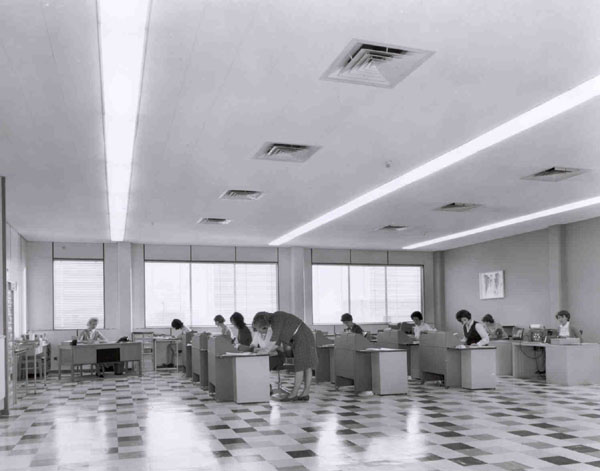
A few years ago it was usual for computers used for scientific work to be operated by the programmers - the people who prepare the sequence of instructions to carry out a given set of calculations; today, it is necessary for full time operators to control the flow of work through a computer of the size and speed of Atlas, and in addition the computer itself is built and programmed so that some of the features previously dependent on human effort and the ability to make decisions, are carried out automatically.
The Operations Group is concerned with providing the operating teams for the computer, the services for receipt and dispatch of work, the preparation and editing of programs and data in a number of different media, and the preparation of accounts for computer time used, together with the operating statistics needed to assess the use made of the computer.
The operating teams have to face some new problems which arise from having a number of different forms of input and output, and from the features of the Supervisor built in to make the maximum use of the computer time. Because Atlas has a very high computing speed and the speed of the input devices is not sufficient to supply information to the central computer at a rate which would keep it fully occupied, input and output are carried out independently using a magnetic tape system as a buffer between the input and output peripherals and the central processor. It is therefore possible to operate all the input and output devices, such as the paper tape readers and punches, simultaneously and at the same time to be using the central processor to carry out the calculations for a program held in the fast store of the computer.
The control of this simultaneous operation requires a small proportion of the time available to the program in the fast store, so that the input-output devices interrupt relatively infrequently and each interruption needs only a small amount of time to deal with the information recently made available by input or needed for an output device. From the operators' point of view, a number of programs are being fed in, a program is actually being computed and several programs may have results coming out all at the same time. To keep track of each job an elaborate book keeping system is incorporated in the Supervisor, so that programs and results can be collated correctly and returned to the originator.
Another important feature of the Supervisor is the ability to schedule jobs so that as many as possible of the facilities connected to the computer can be kept working at the highest possible rate. Each program is preceded by a statement of what facilities will be needed, an estimate of the time required, the number of lines of output and other characteristics. The Supervisor acts on this information and attempts to carry out the jobs in an order which keeps the peripherals active. This mayor may not be the order in which the jobs were presented and the operators, at anyone moment, may not know which job is being worked on by the central processor. It is also possible to give jobs high or low priority by a simple operator request and other parts of the system may be inspected and controlled by similar requests.
The implications of operating a computer with such an advanced system of control have not been fully realised and it will require a good deal of experience before we can say whether this interesting experiment has been successful.
When Atlas is working for three shifts the number of jobs being processed per week is expected to be approximately 3000. Careful attention is needed to deal with this volume and special problems arise because of the very widely dispersed sources of work. The research workers in the Universities developing new programs are as interested in the turn round time in the early stages of a program development as in the total amount of time that the program may eventually need in production. We have therefore made arrangements to assist programmers to get as good a turn round time as possible.
The preparation of programs and data on 5, 7 or 8 track paper tape and on punched cards is another service. It is not intended that all users should have their work punched by the Atlas Laboratory and many users will carry out this job themselves. The punch section, consisting of eight operating staff, deal with the many different programming languages available on Atlas and carry out jobs such as reproducing cards, paper tape and editing paper tape. Some preparation equipment is available for the user to operate personally.
The keeping of accounts and the preparation of some important operating statistics is greatly assisted by the information from the Supervisor after each computing job has been completed. A.E.R.E. and Government Departments have to pay at an agreed rate but what this rate should be raises new problems because the operating system makes a straightforward assessment of machine time impractical. Various methods have been suggested to deal with this problem but there seems to be no general agreement on how it should be done. The preparation of some essential operating statistics will allow us to estimate the future demand and to improve the efficiency of the operating system. This may well become important when Atlas time becomes scarce as more research works turn to computers for assistance.
From the outside, the Atlas Laboratory is an uninspiring building - rather square, dull and ordinary. But inside it has been tailored to the needs of the Laboratory's work in a most refreshing way. Everything seems designed to meet the demands of the work and to provide a pleasant environment. It is impeccably neat and tasteful, a credit to the designers and to those whose job it is to keep the place in order. Even in the bowels of the Laboratory, places like the Alternator House and the Plant Room, everything is well laid out and kept tidy.
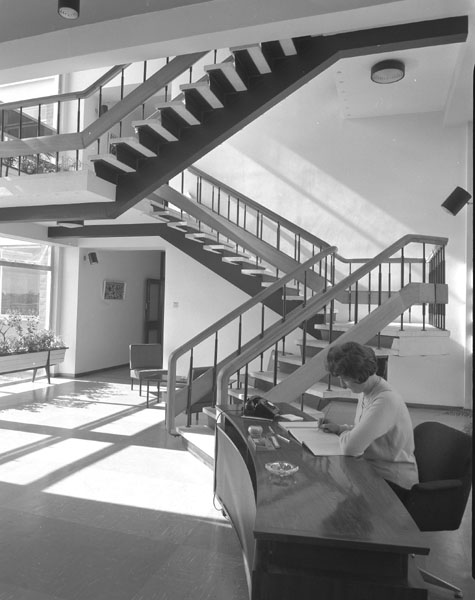
A highly developed aesthetic sense is in evidence everywhere. Worthy of particular mention is the office furniture. Perhaps this is the first Laboratory to break away from the ponderous Victorian articles which encumber other Government establishments. Of Scandinavian design, the desks are by the Birmingham Aston Cabinet Co., and the chairs by Panda Office Equipment. To crown the improvement in appearance, the cost was actually less than for the standard equipment. The offices are neat, each with their own built in bookcase and there are half size offices called "cells" which house short term visitors and "think rooms, " which are equivalent to library "quiet rooms" elsewhere. Perhaps the Atlas inmates think noisily.
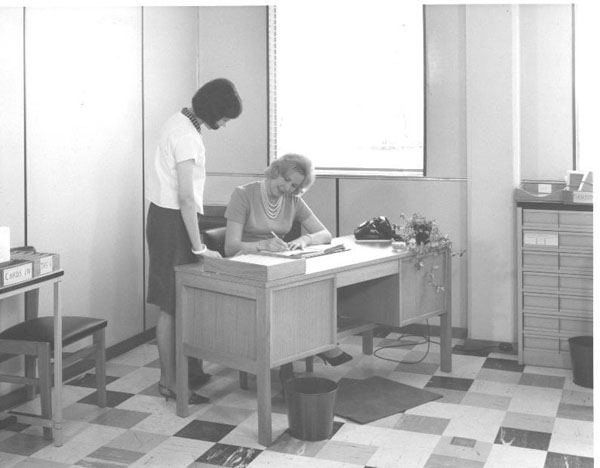
Abstract paintings decorate the walls and even the facilities for the needs of nature and indicated a la continental airport. "Women" or "Men" on the doors would look more incongruous.

The computer block is splendidly designed a place you can breath in. And to work there must be made all the more pleasing by the presence in the Data Preparation Room of many delightful girls. It must have one of the highest concentrations of talent in the country. The Computer Room itself is a science-fiction writer's dream-world of machines taking over man. Tapes wheel about on the 18 tape decks, results chatter out of machines wherever they will, seemingly completely independent of human control. Next door is the Card and Tape Store where the names on the data files really bring home the wide range and interest of the work the computer is handing. From frightening esoteric mathematical exercises like "Multivariate Analysis" we go via "Bubble Chamber (Geometry)" to "Children in Care," "Manager's Diaries," and "Animal Feeding Trials".
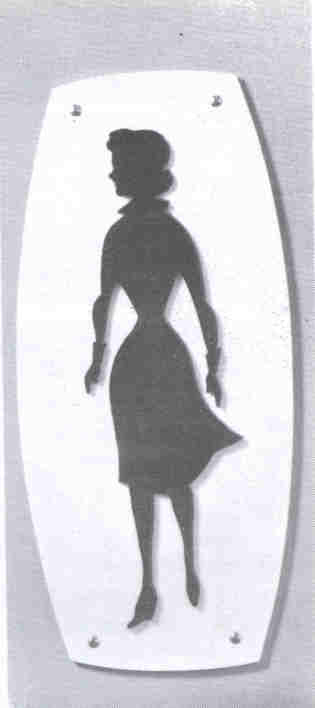
The Laboratory is in a very happy situation. It is small enough to retain personal contacts throughout its staff, and it is obvious that the management place some emphasis on this. Twice a week the whole community gathers for coffee and a chat in the Main Conference Room. And yet it is large enough to command resources. The present complement is 105 in 1966, and the building is designed to accommodate also about 20 visitors.
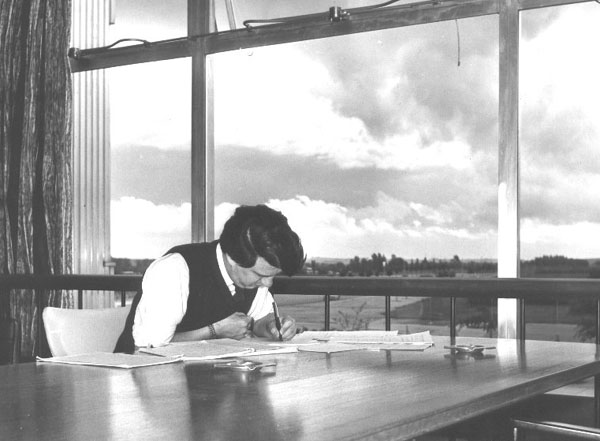
Everyone seems personally involved and proud of the distinctive identity that has been achieved, not least by some of the breakaways from convention mentioned above. To an outsider, looking in, the Atlas Laboratory seems to have a stimulating physical and mental environment for its work. We think it will be a hit.
One of the most interesting features of life in the Atlas Laboratory is that one comes into contact with such a broad range of problems, and an equally broad range of people. Large scale programs for the machine already being tested include Evolution of Star Clusters (for Professor Hoyle's group) and Molecular Biology (for Dr. Kendrew's group). Both of these programs could use many hours of Atlas time. At the other end of the scale is a job for the philosophers of Oxford University which requires only a few seconds of computing time - the decipherment of Wittgenstein's diary; I shall say more about this later.
It is quite obvious that the majority of Atlas users will do their own programming. They will want to write these programs in a language which they find convenient, often one which they use on their local (smaller) computer. To cater for a wide variety of tastes, half a dozen major compilers and several minor ones have already been provided. One of the most important, the Fortran Compiler, was started in A.E.R.E. and has been finished in the Atlas Laboratory with some help from I.C.T. A new Algol Compiler is also being written here and we are also responsible for an IPL-V compiler and additions to EMA. These activities are at present occupying the attentions of over half of the Group.
It is inevitable that some customers will come to us for advice on programming, numerical methods or availability of library subroutines. Such an advisory service is another function of the Group and so also is the provision of Fortran training courses and the like.
Apart from these everyday activities we want to explore various fields of application of a large computer. A number of us are interested in Information Retrieval, Artificial Intelligence, Non-Linear Programming using a computer to discover new mathematical theorems, and other topics. The Fellowships, which Dr. Howlett has mentioned, were established to encourage people of high ability to extend the use of computers within their own lines of research. We already have three Fellows and several very interesting and promising new programs are being developed in collaboration with them. The two programs described below were both suggested by Dr. I. J. Good.
The first is the decipherment of the Wittgenstein diary. This is a tiny job so far as Atlas is concerned but it is unusual and yet a good example of a program where the computing is trivial and the preparation of input and output of vital importance. Ludwig Wittgenstein was an Austrian, born in 1889. He was one of a large family all of whom were obliged by their father to study engineering. In 1911 he went to Manchester for this purpose but, whilst in England, he decided that he was more interested in philosophy and became a student of Bertrand Russell. During the war he served in the Austrian Army and was captured. His short but very important book on philosophy, published in the 1920's, was probably written during the war period. At the same time he kept a diary, which he wrote in code, and this diary, about 200 manuscript pages, is now in Oxford. The code is known; it is a very simple one in which A is represented by Z, B by Y, C by X and so on but unfortunately the text is written in German script and is not too easy to read. Decipherment, though easy is very tedious. Apart from a few sentences it has not previously been deciphered.
The Atlas program takes 5 minutes to read in the 3000 cards which will hold the text, a few seconds to decipher it all and 3 minutes to print out the entire original text and the decipherment (which is of course in German) side by side. I tried to read some of the original script myself and found that I made about 20% errors; for this reason I decided that each line of the diary would be reproduced by one punched card which would include the date and line number. Had this not been done, editing would have been a nightmare. Now, when the machine deciphers a page, a German scans the output and corrects obvious misreadings; the appropriate cards are re-punched and a second pass made and so on, until we have the best text we can achieve. We hope that the diary will prove to be of some philosophical or literary interest.
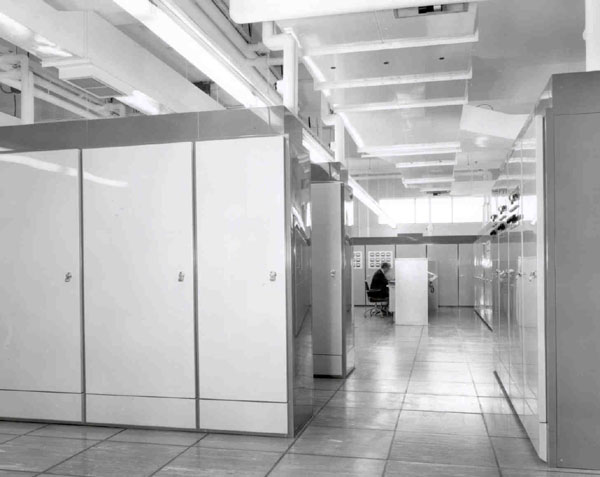
The second program is pretty well the antithesis of the first. The only feature they have in common is that both were suggested as jobs for Atlas by Dr. Good! In this case he suggested that we might like a job which could use up all of Atlas' spare time: a job of low priority which the machine would call in whenever it had a second (or more) to spare. The ideal job for such a purpose is one which has very little input and output but uses many hours of computing time. Such a job is our proposed Test of the Riemann Hypothesis program.
In 1859, the German mathematician G. F. B. Riemann (1820-1866) wrote a paper on "The number of primes less than a given number" . In the course of this paper he was led to study the function
(now known as 'the Riemann Zeta Function'), for complex values of s. If s = a + ib, where 0<a<1 and if ζ(a+ib)=0, Riemann conjectured that a =½, but remarked that he was unable to prove it. This is the famous Riemann Hypothesis: despite enormous efforts by hundreds of mathematicians in thousands of papers it remains neither proved nor disproved after 105 years. Many deep results have been proved and many important discoveries have been made in the attempts to settle the question so that, true or false, it has proved to be a valuable conjecture.
It is now know that the first 25000 or so zeros of ζ(s) in the appropriate region all satisfy the hypothesis, i.e. all have a = ½. It therefore looks as if the hypothesis must be true. There are however grounds for believing that if the hypothesis is false the first case of failure may only occur when b (the imaginary part of s) is very large (say b = 109), and this is far beyond the points so far tested. We hope to test the hypothesis in a region of very large values of b. This will be an excellent low priority filler job for Atlas. If it found a zero with a≠½ it would create the mathematical sensation of the century!
There are many more jobs scheduled for Atlas which fall in between these two extremes but I hope this gives some idea of what an interesting and exciting place the Atlas Laboratory is becoming.